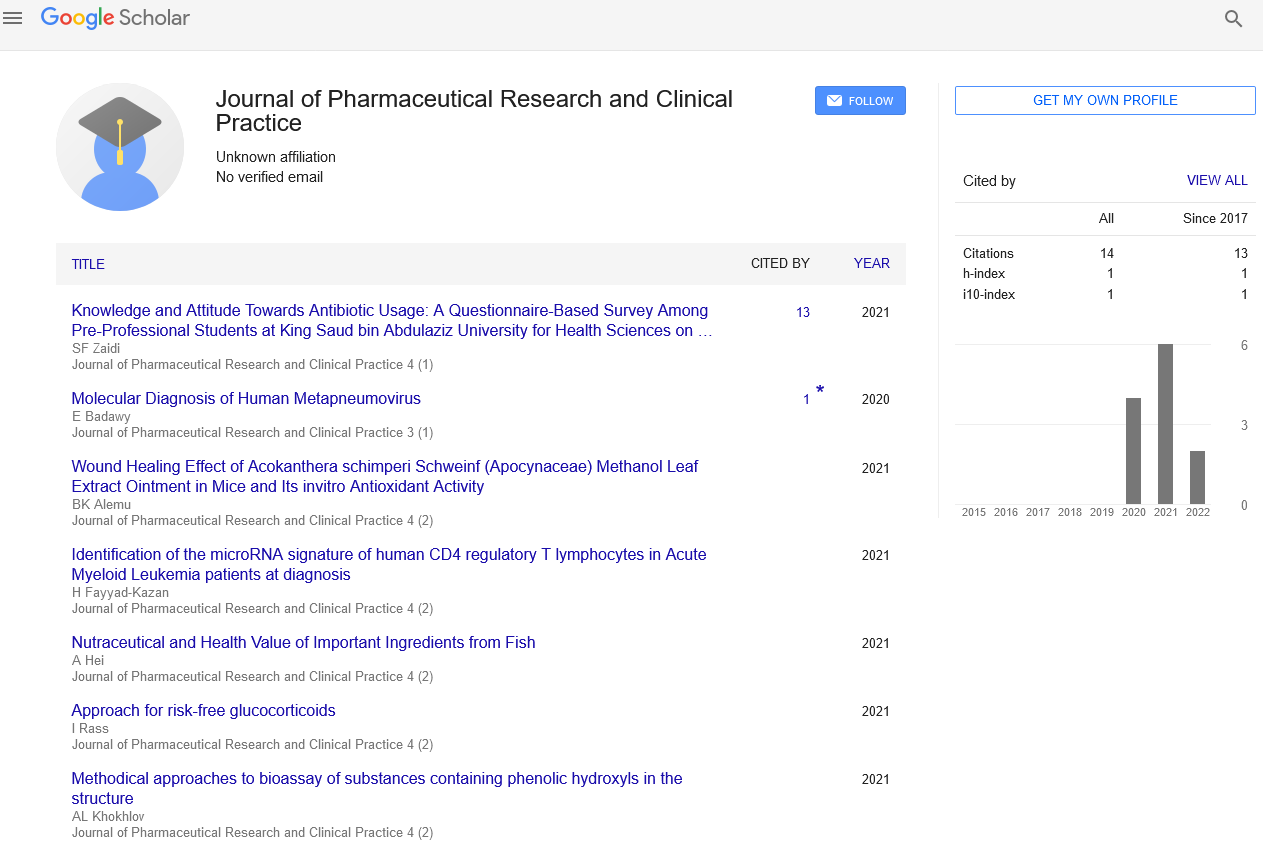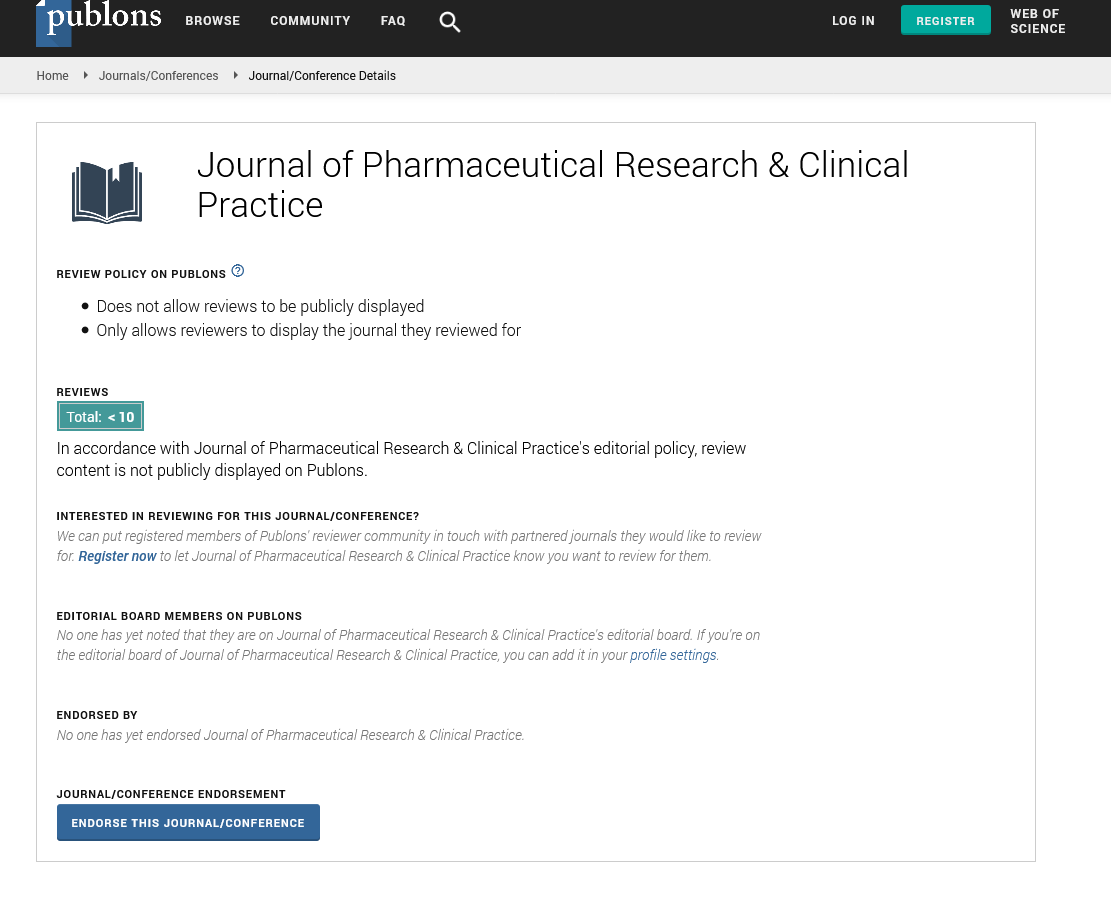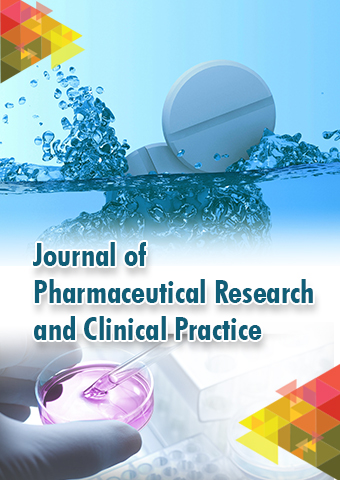Commentary - Journal of Pharmaceutical Research and Clinical Practice (2022) Volume 5, Issue 3
Healthcare resource utilization among patients with obstructive hypertrophic
Michael k Butzner
Received: 02-Jun-2022, Manuscript No. jprcp-22-42150; Editor assigned: 06-Jun-2022, PreQC No. jprcp-22-42150 (PQ); Reviewed: 20- Jun-2022, QC No. jprcp-22-42150; Revised: 23-Jun-2022, Manuscript No. jprcp-22-42150 (R); Published: 30-Jun-2022, DOI: 10.37532/ jprcp.2022.5(3).50-53
Abstract
Obstructive hypertrophic cardiomyopathy (oHCM) has been studied primarily in comprehensive centers of excellence. Broadening the understanding of patients with oHCM in the general population may improve identification and treatment in other settings. This retrospective cohort study identified adults with oHCM from a large electronic medical record database comprising data from 39 integrated delivery networks (IBM Explorys; observational period: January 2009–July 2019). Clinical characteristics, healthcare resource utilization (HCRU), and outcomes were reported. Of 8791 patients, 53.0% were female and the mean index age was 61.8 years. Cardiovascular drugs prescribed included beta-blockers (80.5%), calcium channel blockers (46.0%), and disopyramide (2.4%). Over time, heart failure, atrial fibrillation, and ventricular arrhythmias increased. Surgical procedures included septal myectomy (22.0%), alcohol septal ablation (0.6%), and heart transplantation (0.3%). Implantable cardioverter defibrillators were present in 11.2% of patients. After initial septal reduction therapy (SRT), HCRU increased and 550 patients (27.7%) required a reintervention. Of the overall group, 2.7% experienced sudden cardiac arrest by end of study. In conclusion, this cohort of patients with oHCM had guidelinerecommended drug therapy and procedures. Despite this, heart failure, atrial fibrillation, and ventricular arrhythmias increased, and more than a quarter of patients undergoing SRT required reintervention. These unresolved issues emphasize the unmet need for new, effective therapies for patients with oHCM.
Keywords
Obstructive hypertrophic cardiomyopathy • healthcare resource utilization • electronic medical record
Introduction
Hypertrophic cardiomyopathy (HCM) is a complex cardiac disease with a highly variable clinical profile. Patients with left ventricular outflow tract obstruction, also known as obstructive HCM (oHCM), account for nearly two-thirds of patients with HCM and have a significant burden of comorbidities, including hypertension, heart failure, and atrial fibrillation. The primary treatment for oHCM is pharmacotherapy, including beta-blockers, calcium channel blockers (CCBs), or disopyramide. If symptoms persist or the obstruction worsens on drug therapy, invasive septal reduction therapies (septal myectomy or trans catheter alcohol septal ablation) may be indicated. Implantable cardio verter defibrillator placement may be recommended based on sudden cardiac death risk. In rare cases of end-stage heart failure, heart transplantation may be required [1]. Previous investigations of patients with HCM from single HCM centers of excellence, representing selected referral populations, have shown that patients with HCM benefit from contemporary treatments. The clinical profile and management of patients with HCM have been well characterized within established HCM cohorts; however, there is limited real-world evidence on the clinical profile of patients with HCM in the general community practice across the United States, and the management of patients in the community remains unresolved. Broadening the understanding of the profile of patients with HCM in the general US population may improve screening, identification, and treatment.
Materials and Methods
Study Design and Population: This retrospective observational study included data from the 10-year period between 2 July 2009 and 2 July 2019. We identified patients who had received a diagnosis of oHCM between 1 January 2010 and 31 December 2018 (Appendix A). The first diagnosis date served as the index date for the analysis, and at least two encounters were required within 6 months post-index date as a proxy for patient engagement (Figure 1). After this time, a minimum period of enrollment was not required. Patient health outcomes were assessed at three follow-up dates: 12 months after the index date, 24 months after the index date, and at the end of the study period. Patients meeting criteria for inclusion were included in all follow-up assessments [2].
Data Source: IBM Explorys (IBM, Armonk, NY, USA) is a commercially available database containing longitudinal EMR data of approximately 63 million patients from 39 integrated delivery networks composed of nearly 360 hospitals and 920,000 providers. The database contains information regarding health care provided in the inpatient, ambulatory, emergency, and post-acute settings and includes diagnoses, procedures, medications, laboratory test results, patient-reported outcomes, vital signs, BMI, encounter-level information, providers, and other clinical and operational data. Diagnosis data are coded using ICD-9-CM, ICD-10-CM, and Systematized Nomenclature of Medicine (SNOMED), and procedures are coded using the current procedural terminology, the healthcare common procedure system [3].
Study Measures and Data Analysis: Appendix B includes variables that were captured in our data analysis for patients with oHCM. Demographic characteristics included age, sex, ethnicity, race, insurance type, and geographic region. We captured the usage of drug treatments using a string search of the generic and brand names. Comorbidities and HCM-related outcomes were captured using ICD-9-CM/ICD-10-CM codes. Sudden cardiac arrest was captured using the codes ICD-9: 427.5 and ICD-10: I46.x, which encompass all settings of care. We used a combination of Current Procedure Terminology, ICD- 9/ICD-10 Procedure Coding System, and SNOMED codes to ensure that all procedures were captured. Procedures were divided into two categories: diagnostic and surgical procedures for oHCM treatment. For patients who underwent septal reduction therapy, radiofrequency ablation, pulmonary vein ablation, and other ablation, we also report new-onset atrial fibrillation, defined as the first recorded >3 months after the procedure. Descriptive analyses for study measures were performed to obtain the means, medians, standard deviations, and interquartile ranges. Categorical variables were summarized using frequency and percentage of patients [4].
Discussion
The purpose of this study was to characterize the clinical characteristics, HCRU, and outcomes of patients with oHCM in the United States by utilizing a large, real-world EMR database. These data showed that patients with oHCM were generally over the age of 60 years and were predominantly White and non-Hispanic. Patients experienced guideline-recommended use of drug therapy, and septal myectomy was the most performed procedure, whereas alcohol septal ablation was infrequent in this cohort. After initial septal reduction therapy, 27.7% had a re intervention. Approximately one-third of patients had a record of hospitalization at least once during the study follow-up, and the percentage experiencing sudden cardiac arrest was low. The Explorys database contains a vast amount of data on approximately 63 million patients from 39 integrated delivery networks composed of nearly 360 hospitals and 920,000 providers. A major advantage of this real-world EMR database is the inclusion of comprehensive, longitudinal clinical variables that allow for the analysis of health conditions over an extensive observational period. These data cover all regions in the US across multiple patient care settings, including communitybased clinics and HCM centers of excellence. It also includes detailed clinical data, including inpatient, ambulatory, emergency, and post-acute settings, and includes diagnoses, procedures, medications, laboratory test results, patient-reported outcomes, vital signs, encounter-level information, providers, and other clinical and operational data. The results of this exploratory analysis set the stage for future analysis to build upon this study by exploring these fields using large EMR data. EMR data. The mean age of the cohort was 61.8 years, which is higher than recent studies from HCM centers and one study analyzing a large proprietary claims database. After myectomy or alcohol septet ablation, patients had similar or increased use of medication, and some patients had re intervention, possibly indicating unresolved issues not seen to this extent in previous studies. This is the first study to examine a national sample of patients with oHCM in a large EMR clinical dataset across the United States. Patients with oHCM experienced guideline recommended use of drug therapy, and surgical treatments appeared to appropriately reflect the treatment of patients with oHCM who have disease progression resistant to drug therapies. Despite appropriate treatment, there was an increase in heart failure, atrial fibrillation, and ventricular arrhythmias over the study period. Over a quarter of patients had a re intervention after initial septet reduction therapy. Taken together, our results provide new insights for clinicians and decision makers, suggesting that there is an unmet need for more effective therapies for oHCM.
Conclusions
In summary, patients with oHCM had guideline-recommended use of drug therapy and procedures, and a low percentage of patients experienced sudden cardiac arrest. However, despite the use of contemporary treatment strategies for oHCM, there was an increase in heart failure, atrial fibrillation, and ventricular arrhythmias, and after SRT, over a quarter of patients required re intervention. The identification of these unresolved issues provides new information for clinicians and decisions-makers and emphasizes the importance of new, effective therapies to address this unmet clinical need in patients with oHCM
Result
Codes ICD-9: 427.5 and ICD-10: I46.x, which encompass all settings of care. We used a combination of Current Procedure Terminology, ICD-9/ICD-10 Procedure Coding System, and SNOMED codes to ensure that all procedures were captured. Procedures were divided into two categories: diagnostic and surgical procedures for oHCM treatment. For patients who underwent septal reduction therapy, radiofrequency ablation, pulmonary vein ablation, and other ablation, we also report new-onset atrial fibrillation, defined as the first recorded >3 months after the procedure. Descriptive analyses for study measures were performed to obtain the means, medians, standard deviations, and inter shows diagnosis, hospitalization, and comorbidities. Diagnostic procedure rates had increased by the end of the study period: cardiac imaging was recorded for 87.4% of the cohort, followed by electrocardiography (73.4%), exercise stress testing (32.0%), and coronary angiography (14.1%) [5]. Approximately one-third of patients (33.1%) had a record of hospitalization over the study period. Comorbidities increased over the study period, including hypertension (79.8%) and conduction disorders (30.3%). All drug therapy prescription rates increased from the 12-month follow-up to the end of the study period.
Acknowledgement
None
Conflict of Interest
No conflict of interest
References
- Maron B J, Desai MY, Nishimura RA, Spirito P, Rakowski H, Towbin JA, Dearani JA, Rowin EJ, Maron MS, Sherrid MV et al. Management of hypertrophic cardiomyopathy: JACC state-of-the-art review. J Am Coll. Cardiol. 79, 390–414(2022).
- Ommen S R, Mital S, Burke MA, Day SM, Deswal A, Elliott P, Evanovich LL, Hung J, Joglar JA, Kantor P, et al. Guideline for the diagnosis and treatment of patients with hypertrophic cardiomyopathy: A report of the American College of Cardiology/American Heart Association Joint Committee on Clinical Practice Guidelines, AHA/ACC.142,558–631(2020).
- Maron BJ, Rowin EJ, Casey SA, Link MS, Lesser JR, Chan RH, Garberich RF, Udelson JE, Maron MS et al. Hypertrophic cardiomyopathy in adulthood associated with low cardiovascular mortality with contemporary management strategies. J Am Coll Cardiol. 65, 1915–1928(2015).
- Desai MY, Bhonsale A, Smedira NG, Naji P, Thamilarasan M, Lytle BW, Lever HM et al. Predictors of long-term outcomes in symptomatic hypertrophic obstructive cardiomyopathy patients undergoing surgical relief of left ventricular outflow tract obstruction. Circulation. 128, 209–216(2013).
- Ommen SR, Maron BJ, Olivotto I, Maron MS, Cecchi F, Betocchi S, Gersh BJ, Ackerman MJ McCully RB, Dearani JA, et al. Long-term effects of surgical septal myectomy on survival in patients with obstructive hypertrophic cardiomyopathy. J Am Coll. Cardiol. 46, 470–476(2005).
Indexed at, Google Scholar, Crossref
Indexed at, Google Scholar, Crossref
Indexed at, Google Scholar, Crossref
Indexed at, Google Scholar, Crossref


